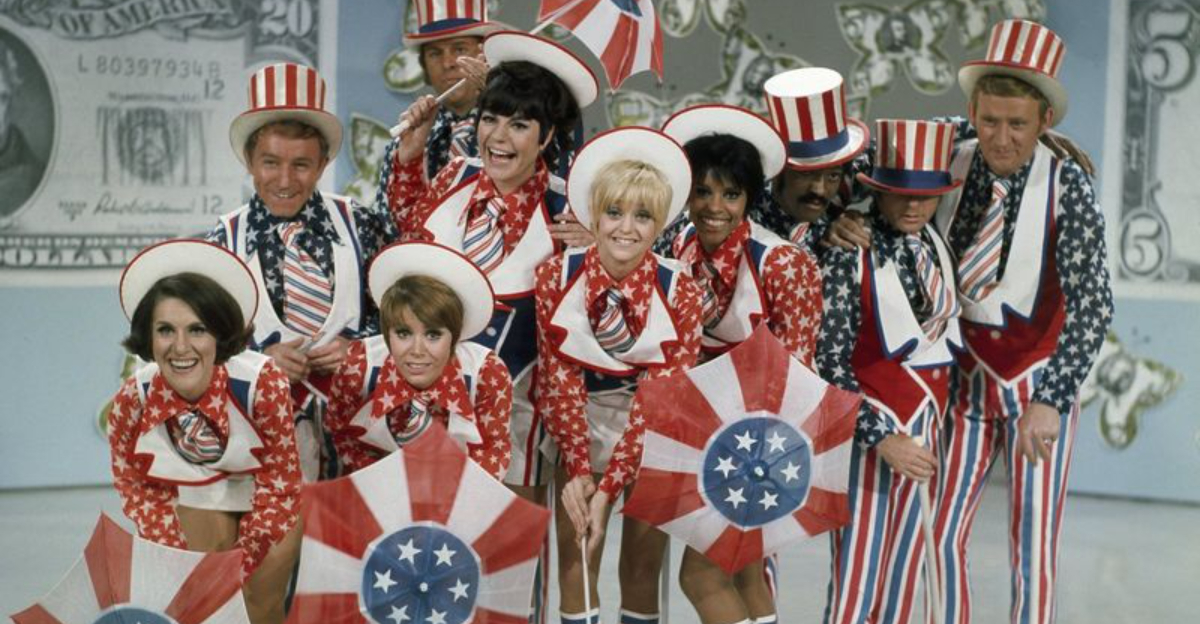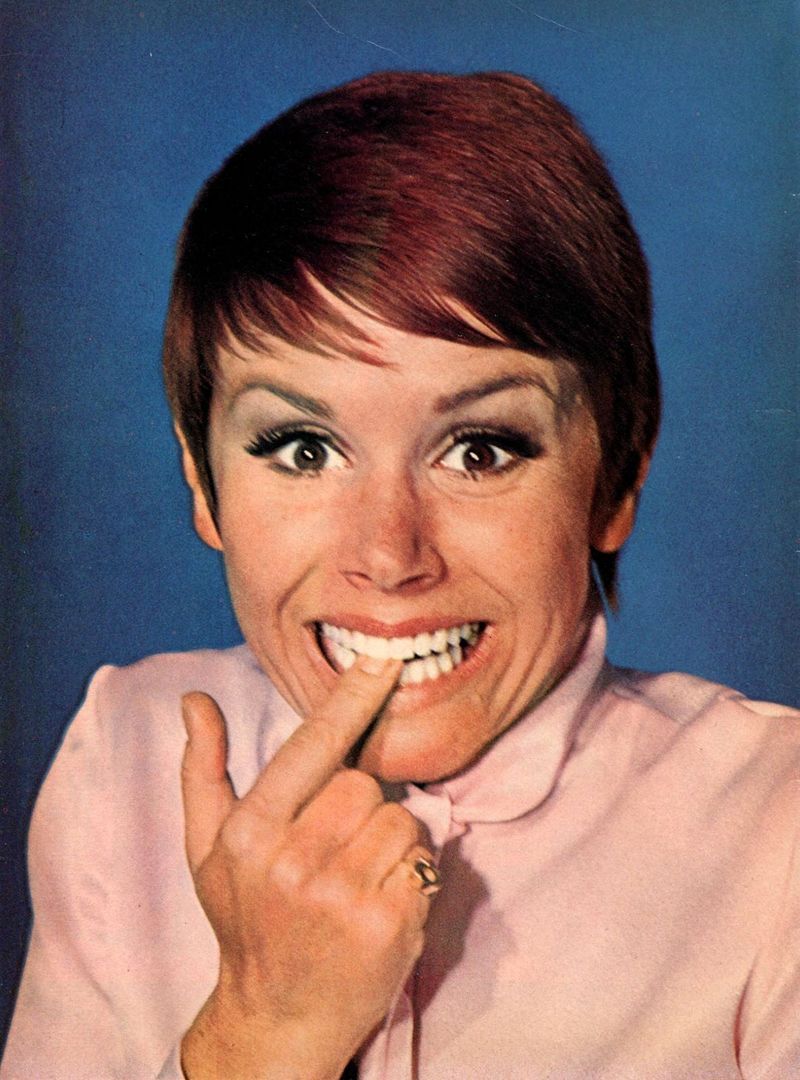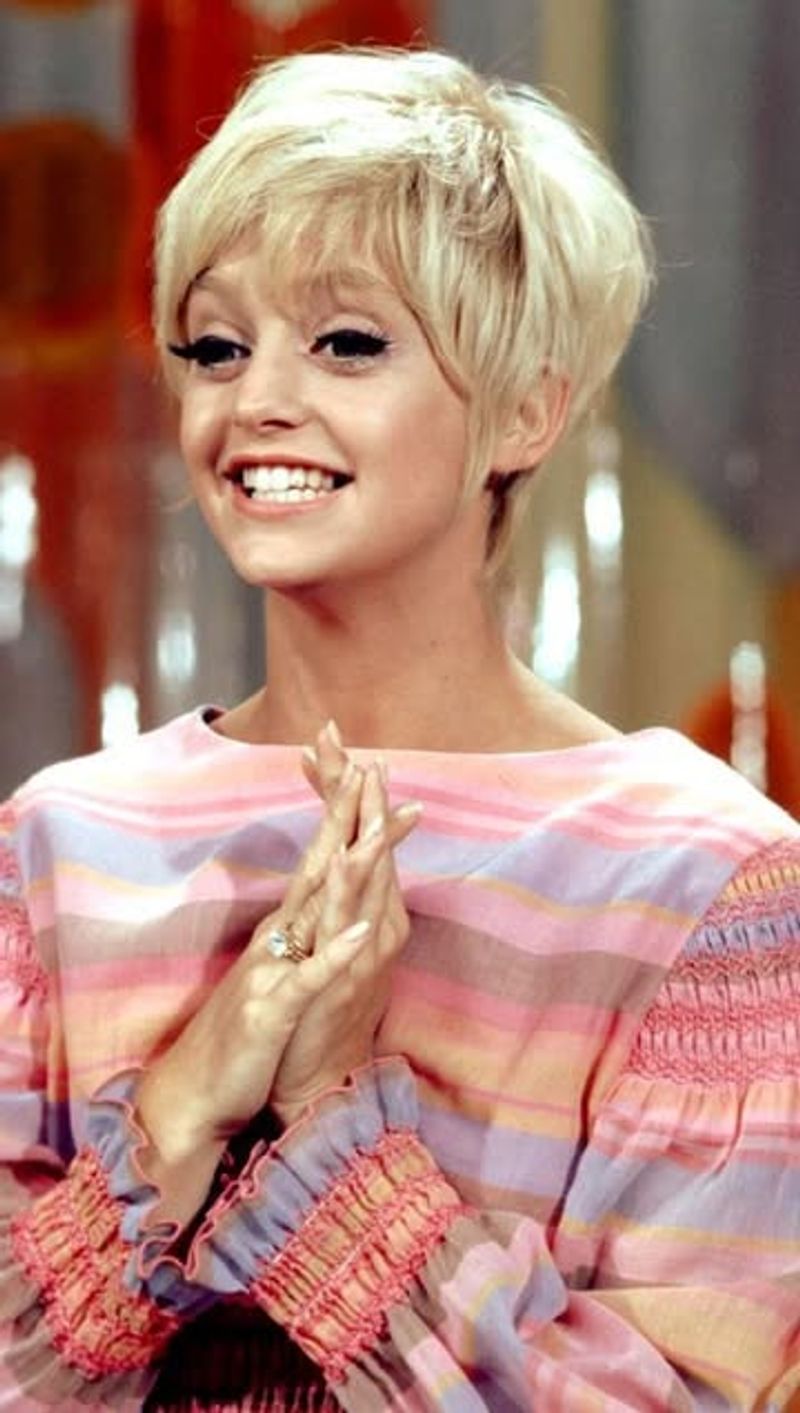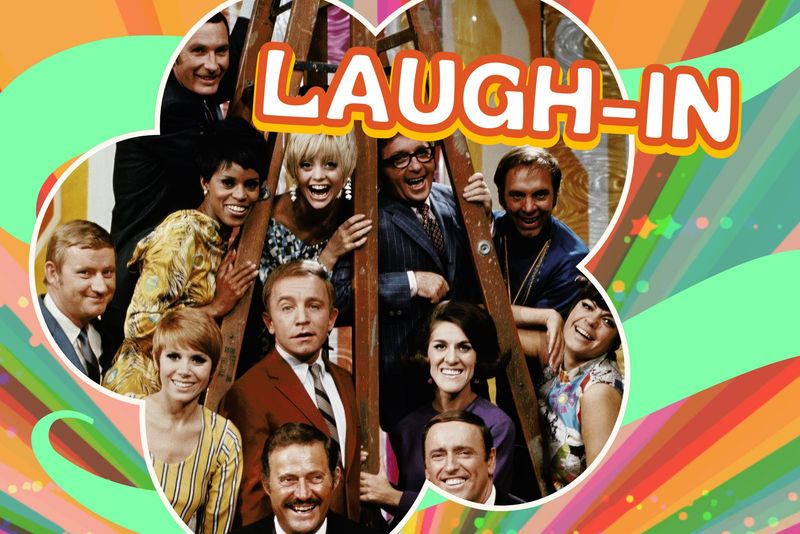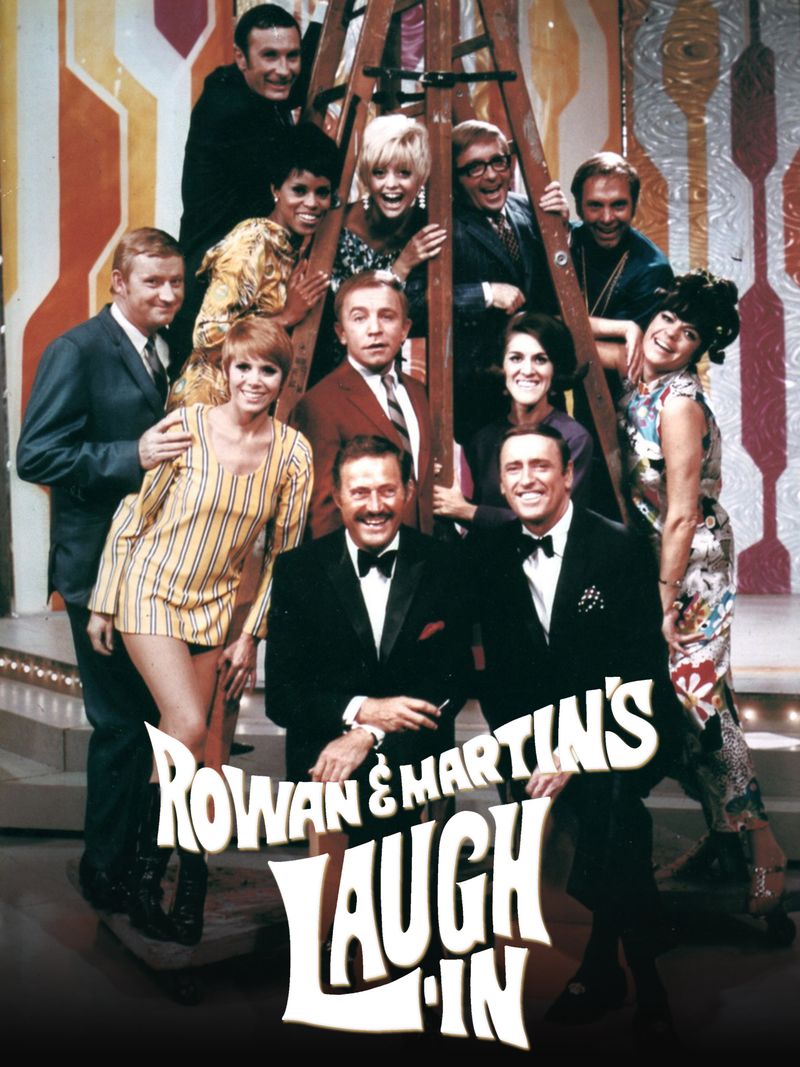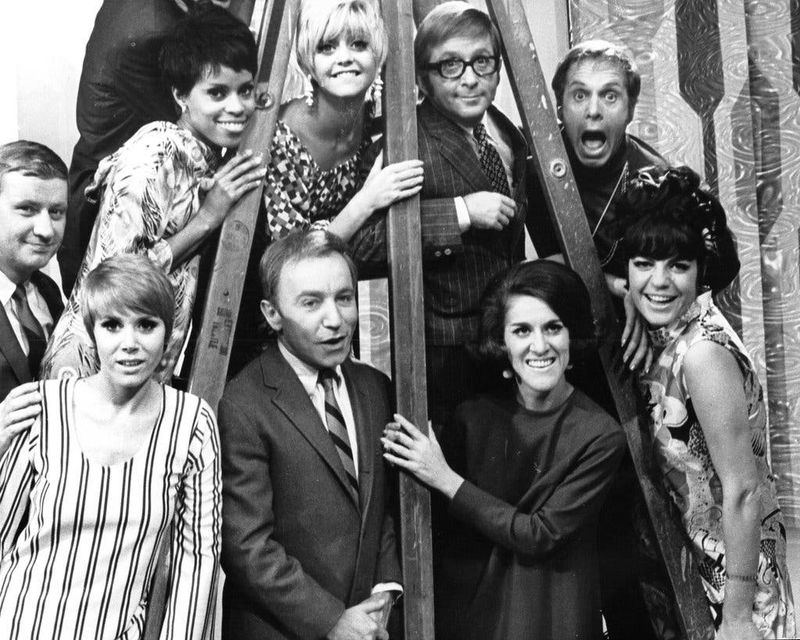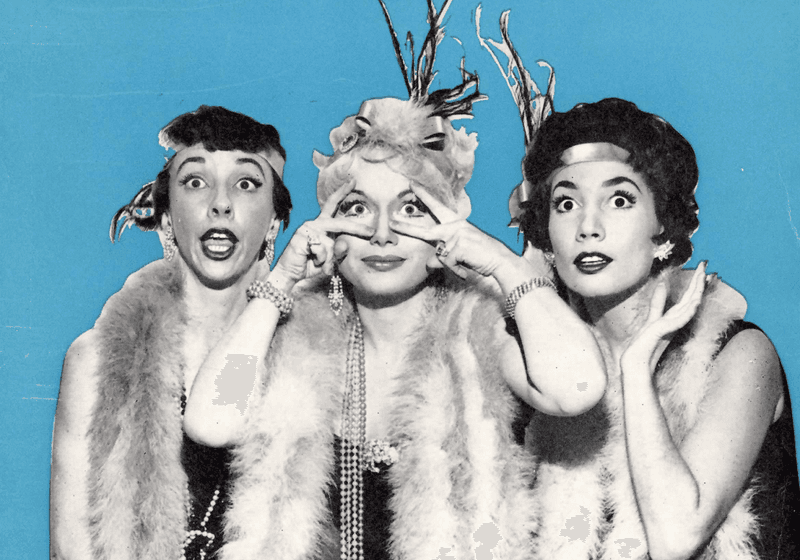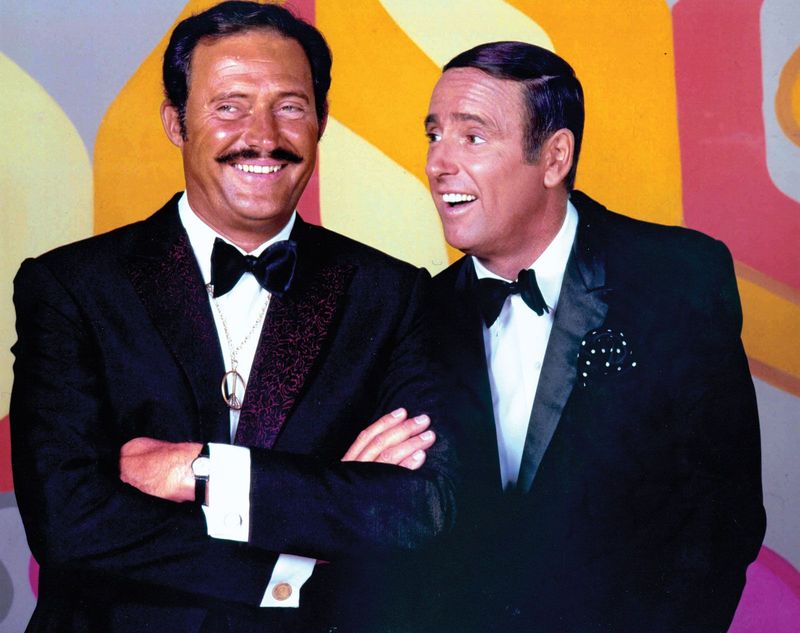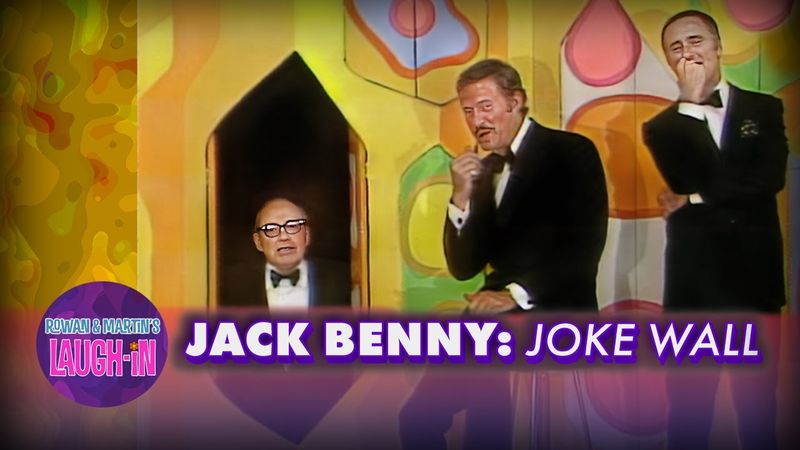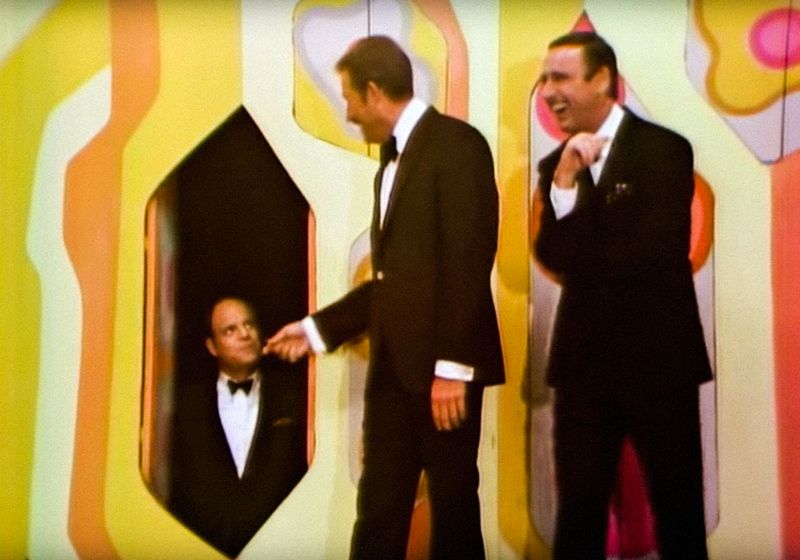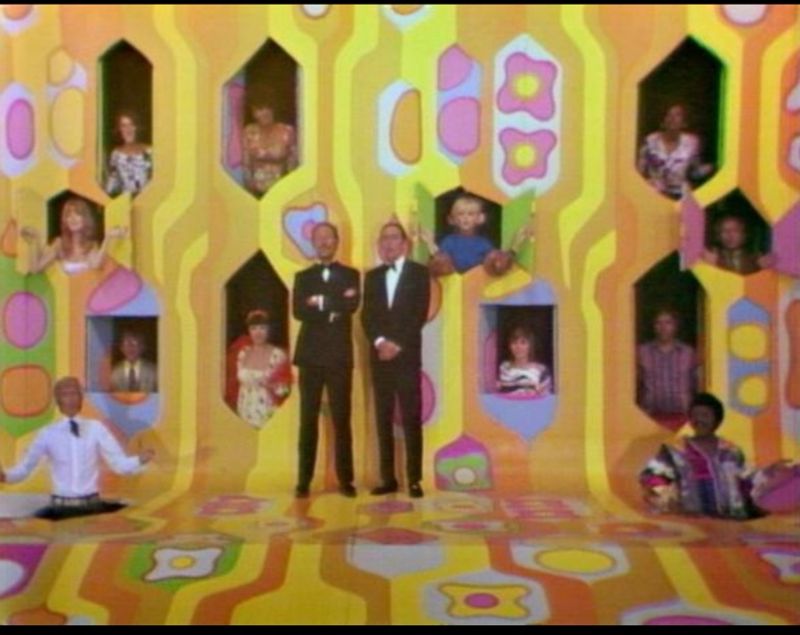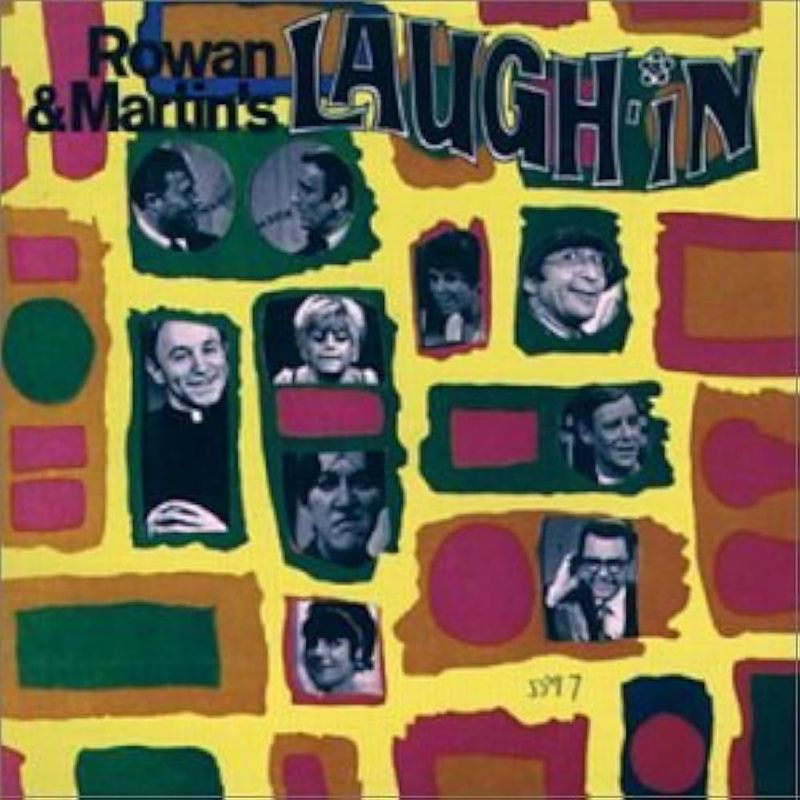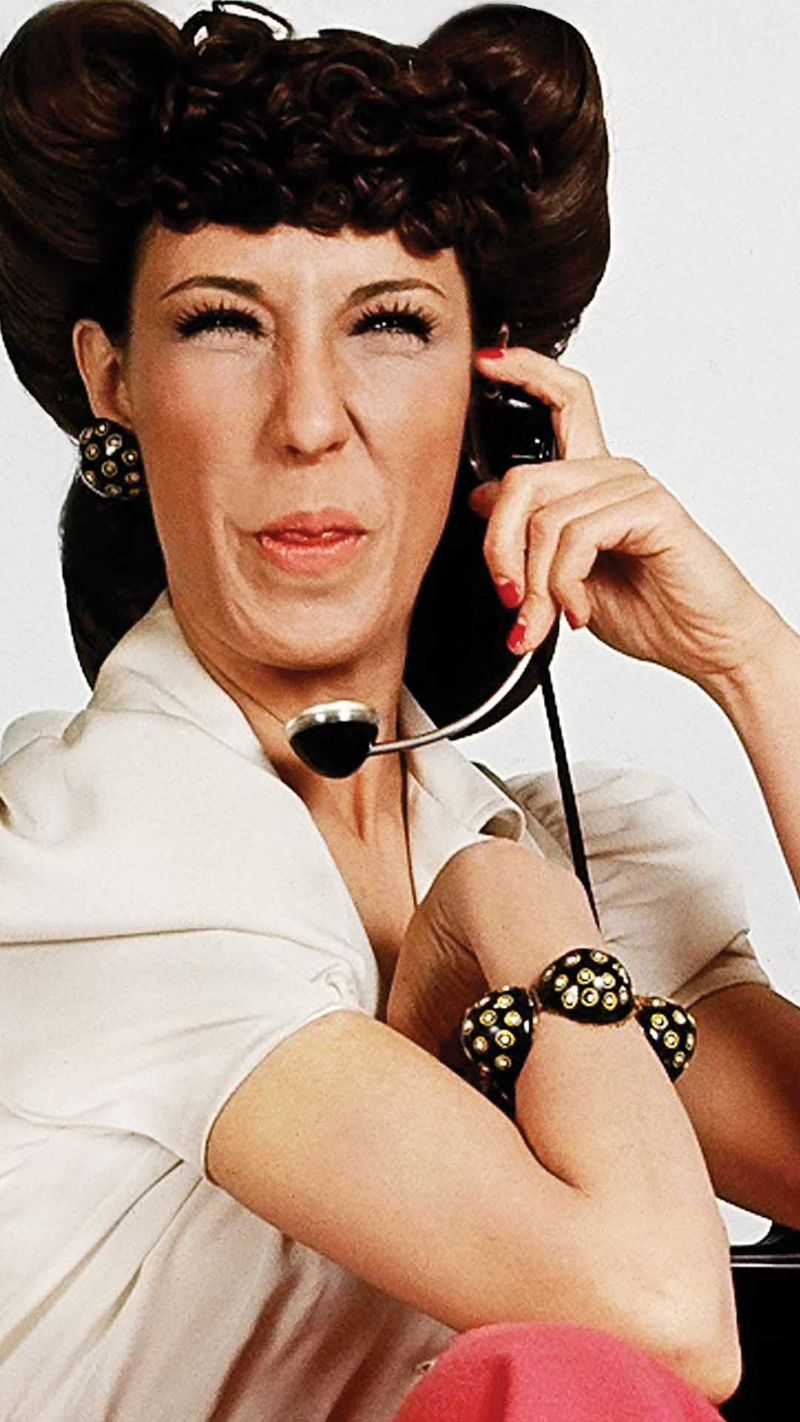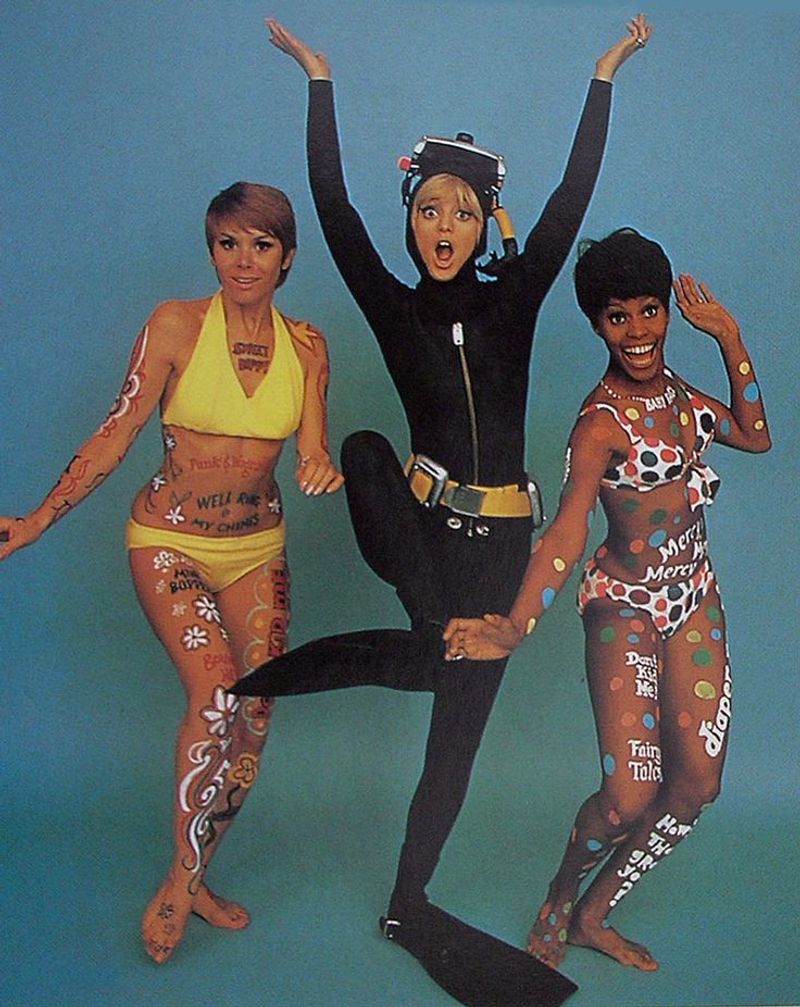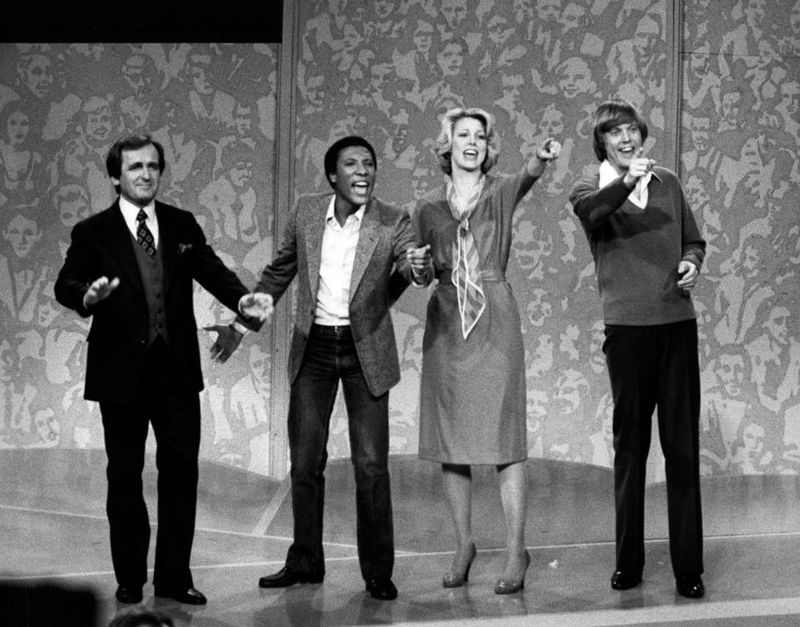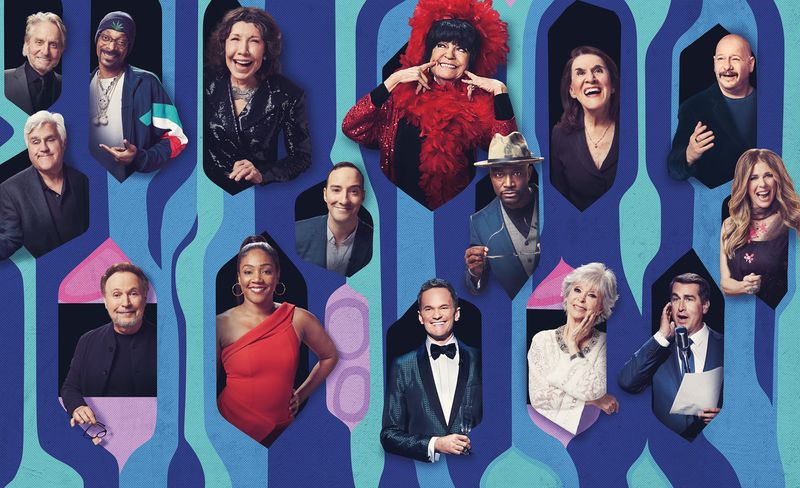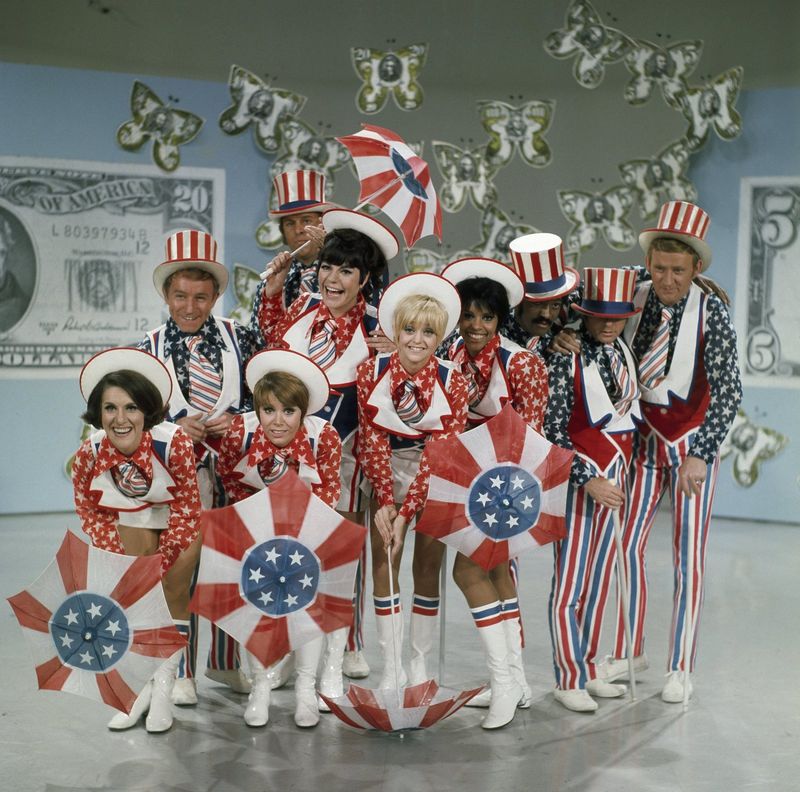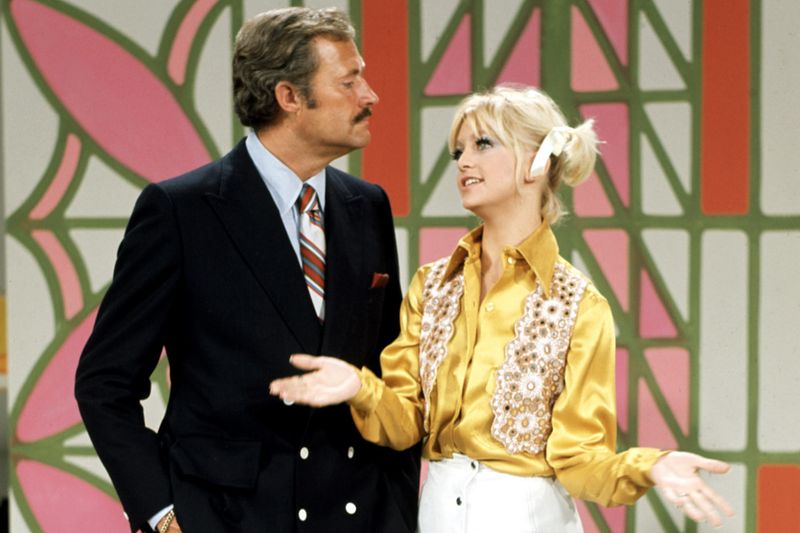Rowan & Martin’s Laugh-In wasn’t just a sketch comedy—it was a cultural rocket ride. Airing from 1968 to 1973, this zany, fast-paced variety show brought psychedelic energy, political satire, and surprise catchphrases to prime time. It also launched the career of a young dancer named Goldie Hawn. Here are 17 things to remember about the show that defined a groovy era.
1. It Was Like Nothing Else on TV
Imagine turning on the TV and being greeted by a whirlwind of colors, sounds, and laughter. “Laugh-In” was unlike any show before it, bombarding viewers with rapid-fire jokes, skits, and dance numbers.
The editing was wild and frenzied, giving audiences a new kind of TV experience that matched the cultural shifts of the era. With its unique format, it revolutionized how variety shows were perceived, making every episode an unpredictable ride. Viewers never knew what to expect next, keeping them glued to their seats, excited for every surprise and punchline.
2. Goldie Hawn Was the Breakout Star
Before becoming a beloved Hollywood actress, Goldie Hawn was the giggling, bubbly star of “Laugh-In.” Her ditzy yet endearing persona, often showcased in body-painted bikinis, quickly captured America’s heart. Despite the show’s fast pace, Hawn’s infectious laughter and charismatic presence made her stand out, paving her way to stardom.
Her role on the show was more than just eye candy; she brought a unique charm and humor that resonated with audiences, making her an unforgettable part of the ensemble cast and a defining face of the show.
3. It Mixed Politics and Punchlines
In an era of cultural upheaval, “Laugh-In” boldly mixed politics with comedy, poking fun at politicians, hippies, and social norms. The show’s writers didn’t shy away from addressing controversial topics through satire, cleverly weaving current events into their sketches.
This fearless approach resonated with a nation hungry for change, making audiences laugh while subtly encouraging them to think critically about the world around them. By blending humor with sharp social commentary, “Laugh-In” became a barometer for the times, reflecting societal changes with wit and wisdom.
4. Catchphrases Went Viral
Long before memes or viral videos, “Laugh-In” was spreading catchphrases like wildfire. Phrases such as “Sock it to me!” and “You bet your sweet bippy!” quickly entered everyday language, becoming cultural staples. These catchy expressions added to the show’s quirky appeal, creating a shared language among fans.
The power of these phrases lay in their simplicity and humor, making them memorable and fun to repeat. They became emblematic of the show’s playful nature, etching “Laugh-In” into the fabric of pop culture with its linguistic legacy.
5. It Had a Killer Cast
The heart of “Laugh-In” was its talented ensemble cast, featuring comedic powerhouses like Ruth Buzzi, Arte Johnson, Lily Tomlin, Judy Carne, and Jo Anne Worley. Each member brought their unique flair and timing to the show, creating a dynamic that kept audiences laughing throughout.
The chemistry among the cast members was evident, with their ability to bounce off each other’s energy seamlessly. This diverse group of comedians ensured that every episode was packed with laughs, making “Laugh-In” a breeding ground for comedy legends that would influence generations.
6. It Was Surprisingly Edgy
“Laugh-In” stood out for its ability to tackle edgy topics with humor and tact, addressing issues like race, gender, and the Vietnam War. At a time when America was grappling with social change, the show’s bold sketches pushed boundaries while keeping audiences entertained.
Its edgy content provided a platform for reflection and discussion, challenging viewers to reconsider their perspectives. Through comedy, “Laugh-In” created a space where sensitive subjects could be explored, making it both a mirror and a catalyst for societal progress.
7. It Won Emmys and Huge Ratings
“Laugh-In” was more than just a hit—it was a phenomenon, claiming top ratings and multiple Emmy awards at its peak. The show’s unique blend of humor and style captivated millions, making it the number-one show in America.
Its success was a testament to its innovation and appeal, resonating with audiences across the country. Winning awards was just the icing on the cake, as “Laugh-In” became a cultural touchstone, influencing television for years to come. Its triumph highlighted the power of laughter and creativity in connecting with people.
8. Tiny Jokes, Big Impact
Brevity was the soul of “Laugh-In’s” wit, with its reliance on quick one-liners, blackout gags, and rapid-fire sketches. These bite-sized jokes, delivered with perfect timing, were not just hilarious but also reflective of a rapidly changing society. The show’s format was ideal for an audience with an appetite for short, impactful humor.
In a world becoming increasingly fast-paced, “Laugh-In’s” style resonated with viewers, proving that sometimes the biggest laughs come from the smallest jokes, forever changing the landscape of comedic television.
9. Richard Nixon Appeared on It
In one of television’s most iconic moments, presidential candidate Richard Nixon appeared on “Laugh-In” and uttered the line, “Sock it to me?” This unexpected cameo was a testament to the show’s wide-reaching influence, showcasing its ability to attract figures from all walks of life.
Nixon’s appearance blurred the lines between politics and entertainment, adding a new dimension to how politicians engaged with the public. This bold move by Nixon highlighted “Laugh-In’s” unique power to draw attention and shape conversations, cementing its place in television history.
10. The Joke Wall Was Iconic
A defining feature of “Laugh-In” was its famous joke wall, where cast members popped out of windows to deliver rapid-fire jokes. This quirky setup became a fan favorite, showcasing the show’s creative approach to comedy.
The wall was a perfect vehicle for the show’s signature humor, allowing for a quick succession of punchlines that kept audiences laughing. Its iconic status is a testament to the show’s inventive spirit, proving that even something as simple as a wall could become a beloved piece of television history.
11. It Had a Trippy Visual Style
Visually, “Laugh-In” was a feast for the eyes, with its use of bright colors, fast cuts, and pop art graphics. The show’s trippy aesthetic perfectly captured the psychedelic vibe of the late 1960s, making it a standout on prime-time television.
This bold visual style was more than just eye candy; it was an integral part of the show’s identity, contributing to its appeal and uniqueness. By embracing the era’s artistic trends, “Laugh-In” not only entertained but also encapsulated the spirit of a generation.
12. Lily Tomlin’s Characters Were Born Here
Lily Tomlin introduced audiences to some of her most beloved characters on “Laugh-In,” including Ernestine the telephone operator and Edith Ann. These characters showcased Tomlin’s incredible range and comedic talent, quickly becoming fan favorites.
Ernestine’s snarky charm and Edith Ann’s childlike innocence added a delightful layer to the show, providing memorable moments that resonated with viewers. Tomlin’s ability to create such distinct and relatable personas was a key factor in her success, making her a standout star in the cast’s talented ensemble.
13. Musical Guests Were Legendary
“Laugh-In” was not just about comedy; it also featured legendary musical guests, adding to its cool factor. Performances by acts like The Temptations and Tiny Tim provided a diverse musical backdrop that complemented the show’s zany atmosphere.
These guest appearances helped bridge the gap between comedy and music, creating a vibrant and varied entertainment experience. The inclusion of such iconic artists further solidified “Laugh-In’s” status as a cultural phenomenon, attracting viewers with its eclectic mix of humor and musical talent.
14. It Captured the Zeitgeist
No show captured the essence of the late 1960s quite like “Laugh-In.” Its absurdity, rebellion, and fun were a perfect reflection of the time, making it a cultural touchstone. The show’s ability to mirror societal shifts and trends allowed it to resonate deeply with audiences, creating a sense of shared experience.
By tapping into the spirit of the era, “Laugh-In” offered both an escape and a commentary, providing viewers with a way to connect with the world around them through laughter and satire.
15. It Was a Springboard for Big Careers
“Laugh-In” was a launching pad for many careers, with Goldie Hawn, Lily Tomlin, and Ruth Buzzi finding lasting success after their time on the show. The exposure and experience gained on “Laugh-In” provided these performers with the skills and notoriety needed to conquer larger stages.
This nurturing environment allowed raw talent to flourish, creating stars who would go on to make significant contributions to the entertainment industry. The show’s legacy is reflected in the successful careers it helped launch, forever linking them to its iconic status.
16. Its Format Influenced Future Shows
“Laugh-In’s” innovative format laid the groundwork for future sketch comedy shows like “Saturday Night Live” and “MADtv.” Its fast-paced, irreverent style set a new standard for television comedy, influencing countless creators and writers.
By breaking the mold, “Laugh-In” demonstrated the power of creativity and risk-taking in entertainment. Its impact is evident in the continued popularity of sketch comedy, as new shows build on the foundations laid by this groundbreaking series. “Laugh-In’s” legacy lives on, inspiring future generations to push comedic boundaries.
17. It Made the Country Laugh—And Think
“Laugh-In” was a comedy revolution, using laughter to engage audiences on multiple levels. While its surface was silly and entertaining, the underlying smart satire encouraged viewers to think. The show’s unique blend of humor and insight made it more than just a comedy; it was a platform for cultural commentary.
By provoking thought through laughter, “Laugh-In” challenged norms and sparked conversations, proving that entertainment could be both enjoyable and meaningful. Its ability to balance humor with depth left a lasting impact on television and society.
